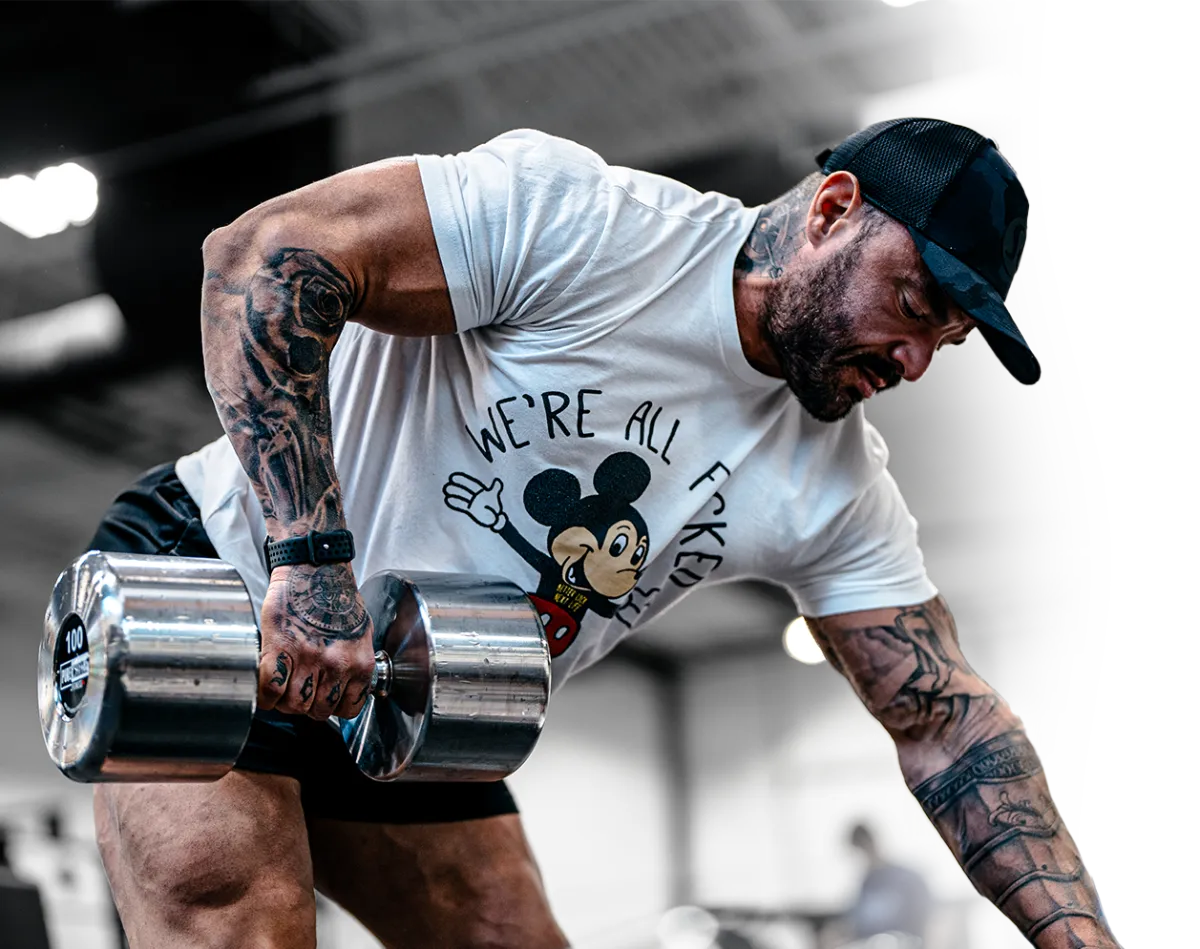Discover The Latest Blogs
Stay updated with Our Informative Blog Posts

A New Spin on Autoregulation
The concept of auto-regulation in training is not new by any means. In fact, you could argue that we all do it to some extent. For those uninitiated to the term, auto-regulation refers to the adjustment of training to accommodate the level of preparedness of the athlete. It can be accomplished via modifications to training load, volume and/ or relative intensity. The efficacy of a properly auto-regulated program is based on the premise that you can only adapt to what you can recover from. Therefore, training can be attenuated to allow for more recovery or more stress. This last point is an important one to keep in mind – training is a stress. We use the stress stimulus to create trauma to the system to elicit a response of the system to recover, super-compensate and come back stronger, faster, fitter etc.
For the average gym goer, they may simply take it easy on a day they are tired, or push limits when they are feeling froggy. This isn’t factored into a periodized training plan and there is very little attention paid to the antecedents of the daily level of preparedness. Now, for the athlete trying to push their physical limits and achieve a certain goal, auto-regulation needs to be implemented in a more pragmatic fashion. There should be metrics tracked and measures put in place depending on the situation.
Common strategies to implement auto-regulation into a training plan would be Rate of Perceived Exertion (RPE), Reps in Reserve (RIR), or Velocity Based Training (VBT). Objective metrics, such as Heart Rate Variability (HRV), Grip Strength, Max Vertical Jump, Omega Wave, or Resting Heart Rate are used to determine preparedness and then the autoregulation strategy of choice is implemented. New strategies are always being developed and refined, but the overarching concept is – how do we gauge preparedness and adjust the training accordingly? This is a very valid question; however, it is missing a big part of the equation – the other 22hrs of the day you’re not training! This model of auto-regulation assumes that the factors outside the gym are uncontrollable variables and to achieve a desired result, the controllable variable (training), is the only thing that can be modified.
Furthermore, the objective metrics being tracked are “lagging metrics.” Meaning that they indicate that you’re already in a bad place. We need to place the emphasis on what happened leading up to that poor score. A low HRV score may indicate poor preparedness for training, but without having tracked the previous days’ stress, restfulness, mood, appetite, sex drive, sleep quality etc. you will have no idea of, 1- why your score is low and, 2- how to ensure your score stays as high as possible as consistently as possible. Without this information, we cannot create a predictable framework to optimize daily preparedness.
In opposition to this paradigm, what if the training was a constant? What if we proposed that the training could not be modified? This is a reality when approaching a competition. You must perform a given workload in training to achieve a desired result at the end of the training cycle. If you can’t make it through the training, you won’t achieve your goal. To get to this point, we must look within ourselves and ask, “how do I modify my lifestyle to improve my preparedness and response from training?” The answer is we must implement similar strategies to the ones used to modify training. Implementing subjective metric tracking to provide measurable metrics on which to base our decision-making process. What doesn’t get measured cannot be managed and what doesn’t get managed cannot be adjusted.
Some valuable metrics to track would be:
Sleep quality
Wakefulness
Appetite
Muscle soreness
Mental acuity
Sense of wellbeing
Perception of stress
Libido
Motivation
Among others.
This form of “inside-out” auto-regulation is in direct opposition to the “outside-in” model we are being pushed. We are being bombarded with devices telling us how we should be feeling and taking those results at face value. Rather than relying on a device to tell us about the quality of our sleep, we would be best served to look within and ask, “how rested do I feel?” The reality is that it doesn’t matter if your smart device tells you that you slept well if you’re exhausted when you wake up in the morning.
This model unlocks an incredible amount of insight into our lives and can have a profound impact on our training. Once we establish values on the subjective metrics we determine are most valuable, we can begin to look at them and find associations. We now become more self-aware and take ownership over our own process, instead of outsourcing it to a piece of technology. We’re now paying attention to the antecedents of our preparedness, rather than accepting that it is high, or low.
Now, using these wearable devices and looking at objective data can be incredibly insightful, but we do have to accept the limitations they present with. These metrics rely on algorithms, many of which are private intellectual property and lack scientific validation. Many of them lack accuracy and validity, meaning that their scores do not directly represent what is actually happening, nor are they properly measuring what they say they’re measuring in many cases. They are however reliable - they do provide a score that is consistent over time. We can use these scores to validate the subjective measures and create our own index for how to use these measures. Yes, that is a lot of work, but if you really want to get into the weeds, they can get pretty deep. Not to mention the changes you can convince yourself of a poor performance before it even happens. But, you could also do the opposite and use the score to convince yourself to perform well. Double edged sword!
Gauging preparedness for training is not a new concept. Dr. Tudor Bompa outlined it quite thoroughly in his book “Periodization,” on page 144. He provided athletes with a subjective questionnaire so he could ensure they were ready to train. What he did not do is propose that the subjective metrics could be controllable variables within the training equation. The reality is that we have been missing the mark to a large degree. We can take actionable steps to reduce our stress, improve our sleep quality, be happier, have more fulfilling personal relationships and optimize our diets. Not only that, but we can develop an understanding about the interaction of these metrics and their interrelatedness. Through this practice, we can create that predictable framework I mentioned earlier. We can optimize our lifestyles outside the gym in a way to improve the reliability of our performances on the days we want to perform.
So, how can you begin to implement some strategies to shift yourself towards an “inside-out” approach?
Pay Attention – Journaling, tracking, reflecting, meditating, or whatever strategy you can implement that helps to create a greater sense of awareness around your habits and behaviours and how they are affecting your life.
Ask “why?” – Stop accepting the day at face value and start to look at the deeper meaning behind your performance. 99% of the time, we have control over our actions and the consequences that shape our reality. By asking ourselves “why?” we seek to establish a greater understanding of the consequences that led us to where we are.
Act Consciously – Once you’ve developed the awareness that certain behaviours lead to certain outcomes, make a conscious effort to model your lifestyle around the end goal you want to achieve. Use the information you’re gathering to improve your performance.
By seeking to find a greater understanding of ourselves and taking ownership of our lives, we reduce the reliance on simply “taking what the day gives us,” and can start pushing our limits to a greater degree more often and start asking, “how can I get everything I need out of this day?” Live more consciously and stop accepting that you’re not in control. You are not beholden to a number on a piece of wearable tech. Your decisions each day determine your trajectory. Start looking at your training from the inside-out.

Coaches Corner PhD




